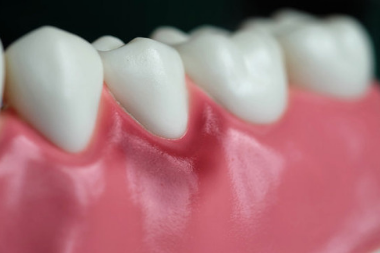 The swelling of the gum line is referred to as gum disease. It features in the list of the most reported oral health issues in the United States. There are three phases of this disease, gingivitis, periodontal, and advanced periodontitis.
The swelling of the gum line is referred to as gum disease. It features in the list of the most reported oral health issues in the United States. There are three phases of this disease, gingivitis, periodontal, and advanced periodontitis.
Types of gum disease and infection
- Gingivitis
- Periodontal
- Advanced Periodontitis
What is Gingivitis?
The most commonly reported form of gum disease is gingivitis, and half of the American population recognizes it because of TV ads for oral health care products. The condition often develops due to a layer of bacteria containing plague that grows on teeth, gums and makes them puffy, sensitive.
What is periodontal gum disease?
Periodontal gum disease is the next stage of gingivitis. Pockets start developing around the teeth, and the gum begins pulling away from the tooth as the infection shrinks it. Even brushing does not help in cleaning the debris that gets accumulated in the pockets. If ignored the tooth on the infected gum line may eventually fall and trigger bone loss. Besides teeth, it can also impact the patient’s tongue.
Advanced periodontitis
As the name suggests, it is the most advanced stage of the medical condition. The teeth on the affected gum part start loosening as the bone and fibers supporting the same get damaged due to the advanced infection. Aggressive periodontal therapy remains the only option to treat the gums at this level.
Signs of gum problems
Individuals from any age group are vulnerable to gum diseases. Fortunately, it can be cured at any level after detection.
Some of the signs that indicate gums related problems are puffy, swollen or tender gums, bleeding in gums, the formation of small pockets in the gum, problems while biting food, bad breath as well as the formation of pus in parts of gums.
What causes gum disease and bone loss
Plaque is the foundation for gum diseases, and ignoring the thin layer formed by bacteria can worsen the condition further.
Plaque is formed when the bacteria in the mouth combine with sugar, starches from food particles. As this layer forms daily, only brushing and flossing can help in getting rid of the same.
If ignored, plaque hardens and turns into tartar which is full of bacteria. Plus, chronic inflammation in this disease can negatively impact the immune system. It can only be removed by carrying out professional dental cleaning procedures at the dental office.
Patients who have Crohn’s disease, rheumatoid arthritis, and diabetes are more prone to gum disease.
What to do when you have a gum infection? How to rid of gum disease?
Gingivitis in its early stage can be cured by merely following proper brushing and flossing twice a day to ensure the plaque does not build up again. However, when the disease turns into periodontal or advanced periodontitis, which includes the formation of tartar, the only option left is professional cleaning at a dental office. Depending on the type of infection, your dentist may also recommend root planning, scaling, laser-based cleaning treatment, bone and tissue grafts, or flap surgery. Special mouthwash, antibiotic gels, and capsules, tablets may also be prescribed.
Gum disease and oral cancer
It is a well-known phenomenon that gum tissue can transfer periodontitis infection in the patient’s bloodstream and cause coronary artery disease, as well as respiratory disease.
To be precise, periodontal disease has also been linked with kidney cancer, lung cancer, white blood cell cancers, and pancreatic cancer by researchers from around the world.
As per a recent study published by The Lancet Oncology, men suffering from gingivitis remain 14 percent more vulnerable to cancer compared to those with good oral health. Plus, some signs of gingivitis do match the symptoms of oral cancer/gum cancer. Patient’s gums turn dusky red in case of gum disease. On the other hand, a light pink gum should be looked upon as a cause of concern. Cancerous gum line does not bleed but turns tender. Thus, gum diseases require urgent attention and check-up.
Dentists recommend a biopsy of the area in case if the patient’s gum develops patches or shows irregular growth.
Food items that need to be avoided entirely
Besides altogether avoiding smoking while under treatment, dentists suggest patients to not to eat sugary, acidic foods, sticky items like chocolates, and starchy items. The patient also needs to avoid consuming wine, fruit juices, coffee, energy drinks, soda, sports drinks, and alcoholic drinks until gums start healing.
More significant problems can be detected earlier during checkups and can be controlled from spreading. Thus, patients with gingivitis or family cancer history should not skip regular oral health checkups.
If you are worried about swollen gum line and are looking for a trustworthy dental office in Roswell (GA), you should surely connect with experts at TruCare Dentistry.
